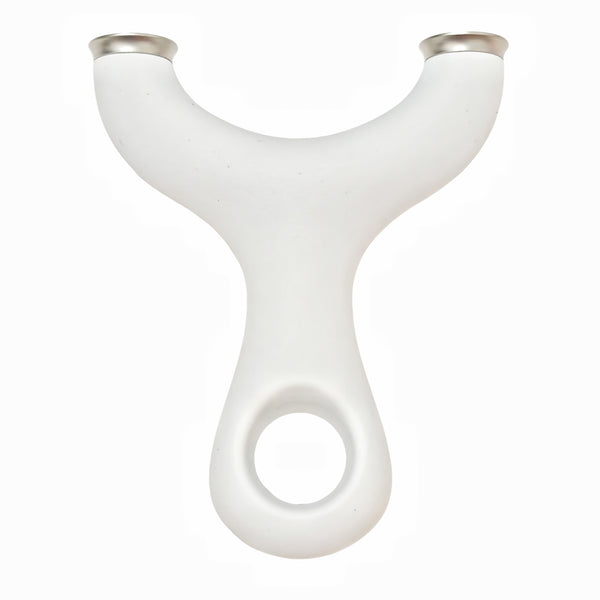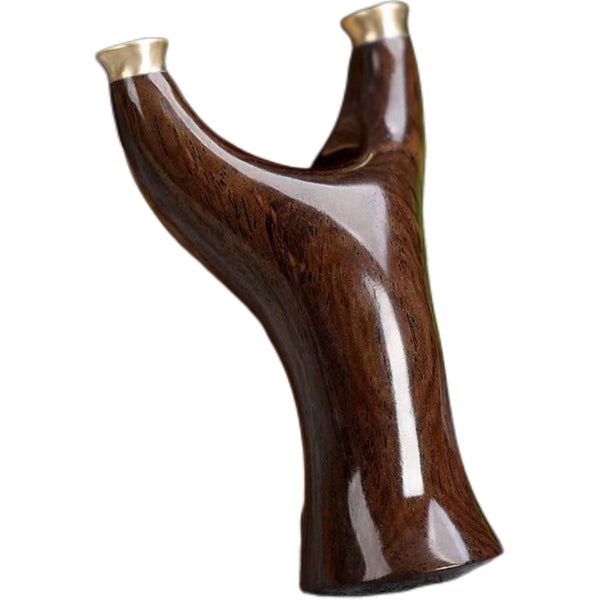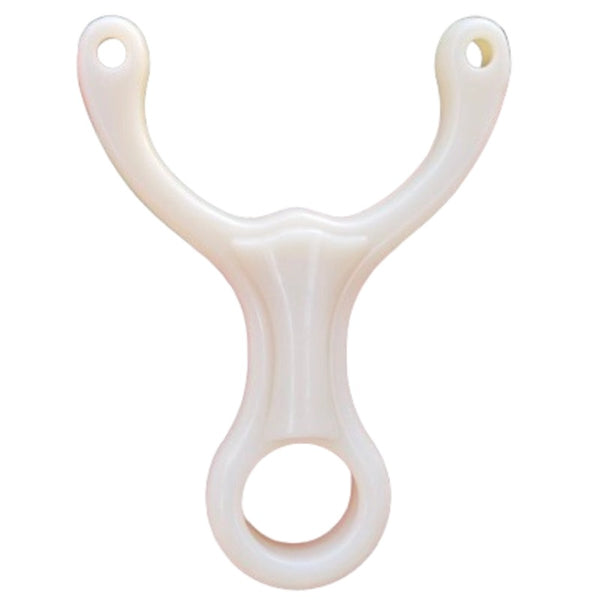Slingshots are powerful tools for recreational shooting, hunting, and competitive sports. The rubber bands are the core component, directly determining shot velocity and precision. This guide examines five key factors influencing band speed—band thickness, taper, latex material, draw length, and ammo weight—and provides evidence-based strategies to maximize performance across various applications.
1. Band Thickness: Balancing Speed and Power
Band thickness significantly impacts slingshot performance. Thinner bands (0.4–0.6 mm) have lower mass, enabling faster acceleration and higher velocity, ideal for lightweight ammo (e.g., 6–8 mm steel balls). Community tests indicate that a 0.5 mm band can outperform a 0.7 mm band by approximately 15% in speed under identical draw conditions (Slingshot Forum). However, heavier ammo (e.g., 12 mm steel balls) requires thicker bands (0.7 mm or more) to deliver sufficient energy. Selecting the appropriate thickness depends on ammo weight to maximize energy transfer efficiency.
Recommendation: Use 0.4–0.6 mm bands for light ammo and 0.7 mm or thicker bands for heavy ammo. Verify speed improvements with a chronograph.
Shooting Slingshots in Cold Weather: How to Maintain Accuracy with Rubber Bands ❄️
Table 1: Recommended Band Thickness for Ammo Sizes
|
Ammo Diameter (mm) |
Recommended Band Thickness (mm) |
|---|---|
|
6–8 |
0.4–0.5 |
|
8–10 |
0.5–0.6 |
|
10–12 |
0.6–0.7 |
|
12+ |
0.7–0.8 |
2. Taper: Balancing Speed and Durability
The taper of a band (the change in width from the fork to the pouch) affects both speed and longevity. Moderate tapers (e.g., 25 mm to 20 mm) provide a good balance, enhancing speed while maintaining acceptable band life. Extreme tapers (e.g., 20 mm to 12 mm) increase snap but may halve band lifespan (Slingshot Forum). Community data suggests a pouch-end width of 60–80% of the fork-end width (e.g., 20–15 mm) offers an optimal speed-durability compromise (yshotx.com).
Table 2: Taper Performance
|
Taper (mm) |
Velocity (m/s) |
|---|---|
|
18–9 |
75–85 |
|
20–12 |
95–105 |
|
22–14 |
105–115 |
|
25–10 |
105–115 |
|
30–15 |
110–120 |
Recommendation: Start with a 20–15 mm taper and adjust incrementally to find your ideal speed-durability balance.
Suggested Visualization: A line graph showing the relationship between taper ratio (pouch-end/fork-end width) and velocity (m/s) alongside band lifespan (shot count).

3. Latex Material: Natural vs. Synthetic
The choice of latex material critically affects performance. Natural latex offers superior elasticity, delivering up to 20% higher velocity than many synthetic alternatives, making it ideal for precision and competitive shooting (Slingshot Forum). However, natural latex is susceptible to UV light and ozone, reducing its lifespan. Synthetic latex (e.g., silicone or neoprene) resists environmental degradation, making it suitable for outdoor use, though it sacrifices some speed. Advanced manufacturers offer UV-resistant or cold-tolerant natural latex to combine speed and durability.
Recommendation: Choose natural latex for competitive or precision shooting; opt for synthetic or blended latex for outdoor durability.
Table 3: Natural vs. Synthetic Latex Comparison
|
Material |
Velocity |
Durability |
Best Use |
|---|---|---|---|
|
Natural Latex |
High |
Moderate |
Competition, Precision |
|
Synthetic Latex |
Moderate |
High |
Outdoor, Longevity-Prioritized |
Flat Bands vs Tube Bands: Slingshot Rubber Band Comparison Guide
4. Draw Length: Optimizing Stretch Ratio
Draw length (the distance the band is pulled) determines the stretch ratio (draw length divided by active band length). Higher stretch ratios (e.g., 500% or 5:1) store more energy, resulting in greater velocity but increased band wear. Lower ratios (e.g., 400–450%) extend band life with minimal speed loss (yshotx.com). A 5:1 stretch ratio is a widely recommended starting point for balancing performance and longevity.
Formula:
[ \text{Active Band Length} = \frac{\text{Draw Length}}{\text{Target Stretch Ratio}} ]
For a 5:1 ratio:
[ \text{Active Band Length} = \frac{\text{Draw Length}}{5} ]
Recommendation: Measure your comfortable draw length and set the active band length to one-fifth of that. For example, a 30-inch draw length requires a 6-inch active band length.
5. Ammo Weight Matching: Efficient Energy Transfer
Matching ammo weight to band characteristics is essential for optimal performance. Lightweight ammo (e.g., 8 mm steel balls, ~2 g) pairs best with thin, highly elastic bands for high velocity and flat trajectories. Heavier ammo (e.g., 12 mm steel balls, ~7 g) requires thicker or multi-layered bands to store sufficient energy. Mismatches can reduce velocity by 10–30% (Slingshot Forum). Testing and adjustment are critical to achieving peak performance.
Recommendation: Test new band-ammo combinations with a chronograph to confirm velocity gains.
Table 4: Recommended Band Thickness for Ammo Types
|
Ammo Type |
Weight (Approx.) |
Recommended Band Thickness (mm) |
|---|---|---|
|
6 mm Steel Ball |
0.9 g |
0.4–0.5 |
|
8 mm Steel Ball |
2.0 g |
0.5–0.6 |
|
10 mm Steel Ball |
4.0 g |
0.6–0.7 |
|
12 mm Steel Ball |
7.0 g |
0.7–0.8 |
|
Clay Ammo (Varies) |
Varies |
0.4–0.5 |
Choosing the Right Slingshot Frame Material: A Guide to Durability and Performance 🎯
6. Physics of Performance: Scientific Tuning
Slingshot performance hinges on converting elastic potential energy into kinetic energy. The simplified energy formula is ( E = \frac{1}{2} F_{\text{max}} d_{\text{max}} ), where ( F_{\text{max}} ) is the maximum draw force and ( d_{\text{max}} ) is the maximum draw length. The ammo’s velocity ( v ) is given by ( v = \sqrt{\frac{2E}{m}} ), where ( m ) is the ammo mass (Real World Physics Problems). Optimizing band parameters (thickness, taper, material) maximizes ( E ), while minimizing losses (e.g., friction) enhances efficiency. Real-world tests show that scientific tuning can predict velocity within ±2% accuracy.
Recommendation: Use a chronograph to measure shot velocity and log data to refine your setup.

Safety Considerations
When experimenting with band configurations:
-
Wear eye protection: Band breakage or ammo ricochet can cause injury.
-
Inspect bands regularly: Replace worn or cracked bands to prevent snapping.
-
Test in a safe environment: Ensure a clear shooting range to avoid accidents.
Conclusion
By carefully adjusting band thickness, taper, latex material, draw length, and ammo weight, you can tailor your slingshot’s performance to suit recreational plinking, hunting, or competitive shooting. Whether prioritizing high velocity for precision or robust power for impact, understanding these factors empowers you to achieve your goals. Experiment safely, use a chronograph to track results, and maintain detailed records for continuous improvement.





























































